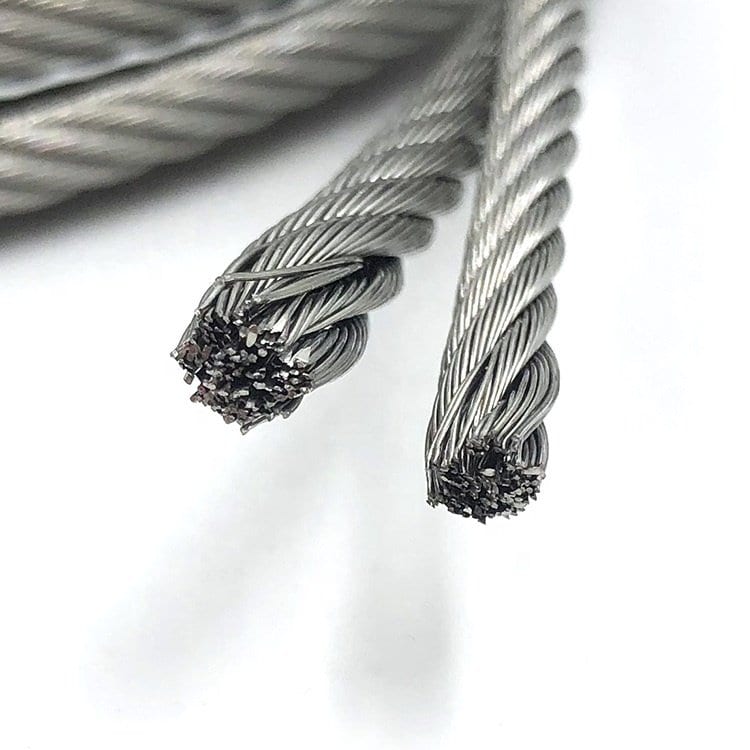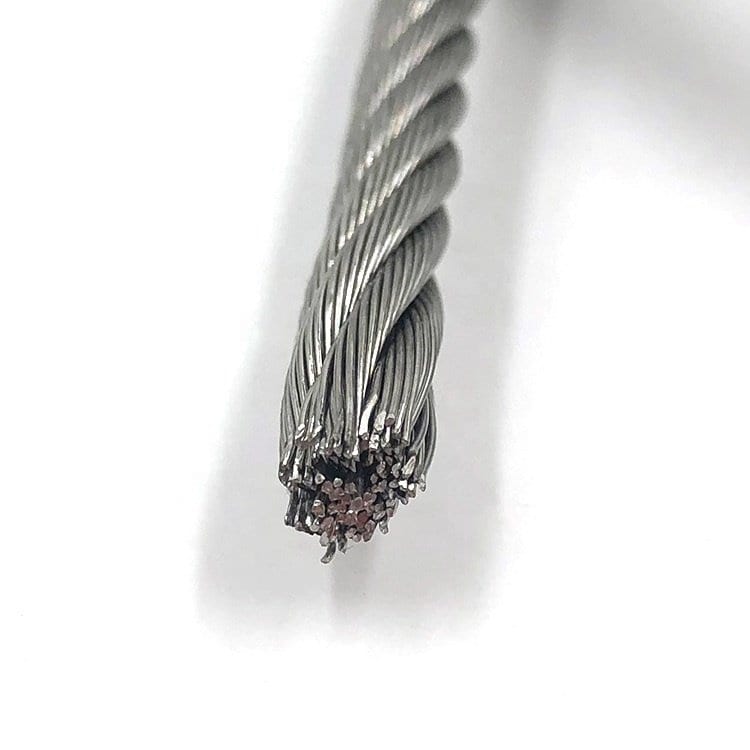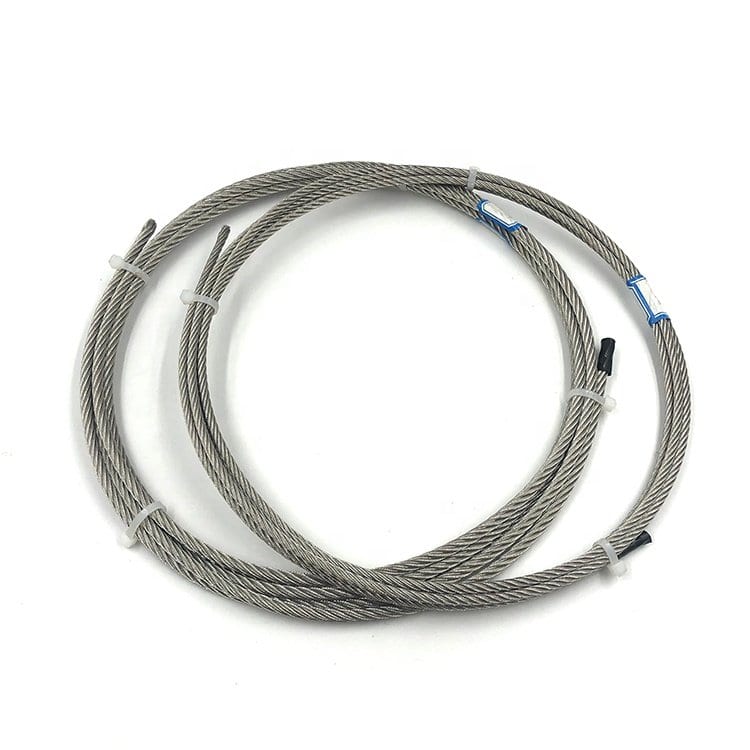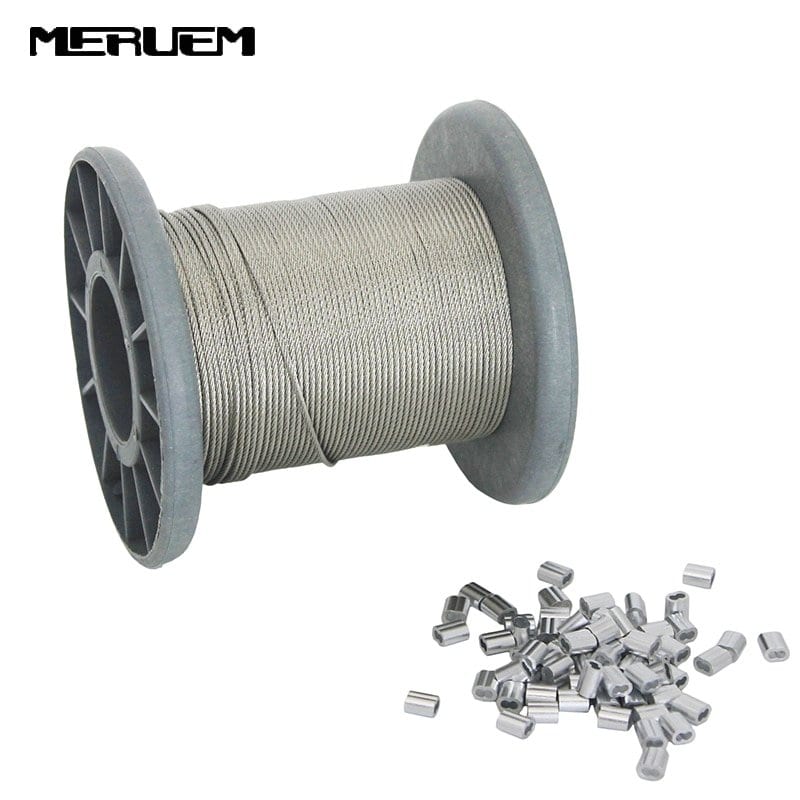What is Hot Dip Galvanized Cable?
In hot dip galvanized cable, each uncoated steel wire is immersed in a molten zinc bath. Prior to dipping, the wires are put through a rigorous 7-step caustic cleaning process and then dipped into the molten zinc at a temperature of around 860°F/460°C. As it’s withdrawn from the molten bath, the material cools and forms a coating of zinc on the steel. The wires are then formed into strands and then the strands are helically formed into the finished cable or wire rope configuration.
Hot dip galvanizing provides much better corrosion resistance than electro galvanization because the zinc coating is typically 5 to 10 times thicker. For outdoor or caustic applications where corrosion-resistance is required, hot dip galvanized cable is the clear choice.
Advantages of Hot Dip Galvanized Cable
- Longer service life than electro galvanized
- Process creates an iron-zinc alloy layer on the steel surface and a pure zinc coating on the outer surface. The alloy is very hard and resistant to typical abrasions.
- Normal coating thickness can be up to 10 times thicker than electro galvanized coating
Disadvantages of Hot Dip Galvanized Cable
- Dull finish can be streaky, contain drips, and is typically not applicable in architectural or aesthetic applications
- Significantly more expensive than electro galvanized cable (approximately 40% more expensive for comparable products)
- Galvanic thickness can be inconsistent across the product
Aplikace
Because it offers superior corrosion resistance compared to electro galvanized cable, hot dip galvanized cable can be used for any application where the cable will be exposed to the natural elements or a caustic environment. Hot dip galvanized cable can be used for fencing or perimeters for construction sites, parking garages, farm and livestock facilities, and much more.
Hot dip galvanized wire rope can also be used for lifting and rigging in crane application and with outdoor winches or pulley systems. Professional zip lines are also another popular use as the cable can withstand corrosion in moist and humid environments.
| Materiál | pozinkovaná ocel nebo nerezová ocel |
| Konstrukce | 1×7, 1×19, 6×7, 7×7, 6×19, 7×19 atd. |
| Průměr | 1-20 mm |
| Balení | Dřevěné kotouče, svitky |
| HS kód | 7312100000 |
| Místo původu | Jiangsu, Čína |
| Vzorek | Můžeme poskytnout referenční vzorky, pokud jsou k dispozici na skladě, ale náklady na dodání vzorku by měl nést zákazník. |





Jak objednat:
Při objednávání ocelového lana nás žádáme, abyste nám poskytli úplné informace, jak je uvedeno níže:
A. Účel: Pro jaké lano bude použito.
b. Velikost: Průměr lana v milimetrech nebo palcích
C. Konstrukce: Počet pramenů, počet drátů na pramen a typ konstrukce pramene.
d. Typ jádra: vláknité jádro (FC), nezávislé jádro z ocelového lana (IWRC) nebo nezávislé jádro z drátěného pramene (IWSC).
E. Složení: Pravé pravidelné ležení, levé pravidelné ležení, pravé dlouhé ležení, levé dlouhé ležení.
F. Povrchová úprava: Lesklá (negalvanizovaná), galvanizovaná nebo nerezová, PVC nebo Mazací tuk.
G. Třída drátu: Pevnost drátů v tahu.
h. Mezní zatížení: Minimální nebo vypočítané mez pevnosti v tunách nebo librách.
i. Mazání: Zda je mazání požadováno nebo ne, a požadované mazivo.
j. Délka: Délka ocelového lana.
k. Balení: Ve svitcích obalených olejovým papírem a hessiánskou (orp.p) tkaninou nebo na dřevěných kotoučích.
l. Množství: Podle počtu cívek nebo cívek, podle délky nebo hmotnosti.
m Poznámky: Přepravní značky a další speciální požadavky.


















Recenze
Zatím zde nejsou žádné recenze.